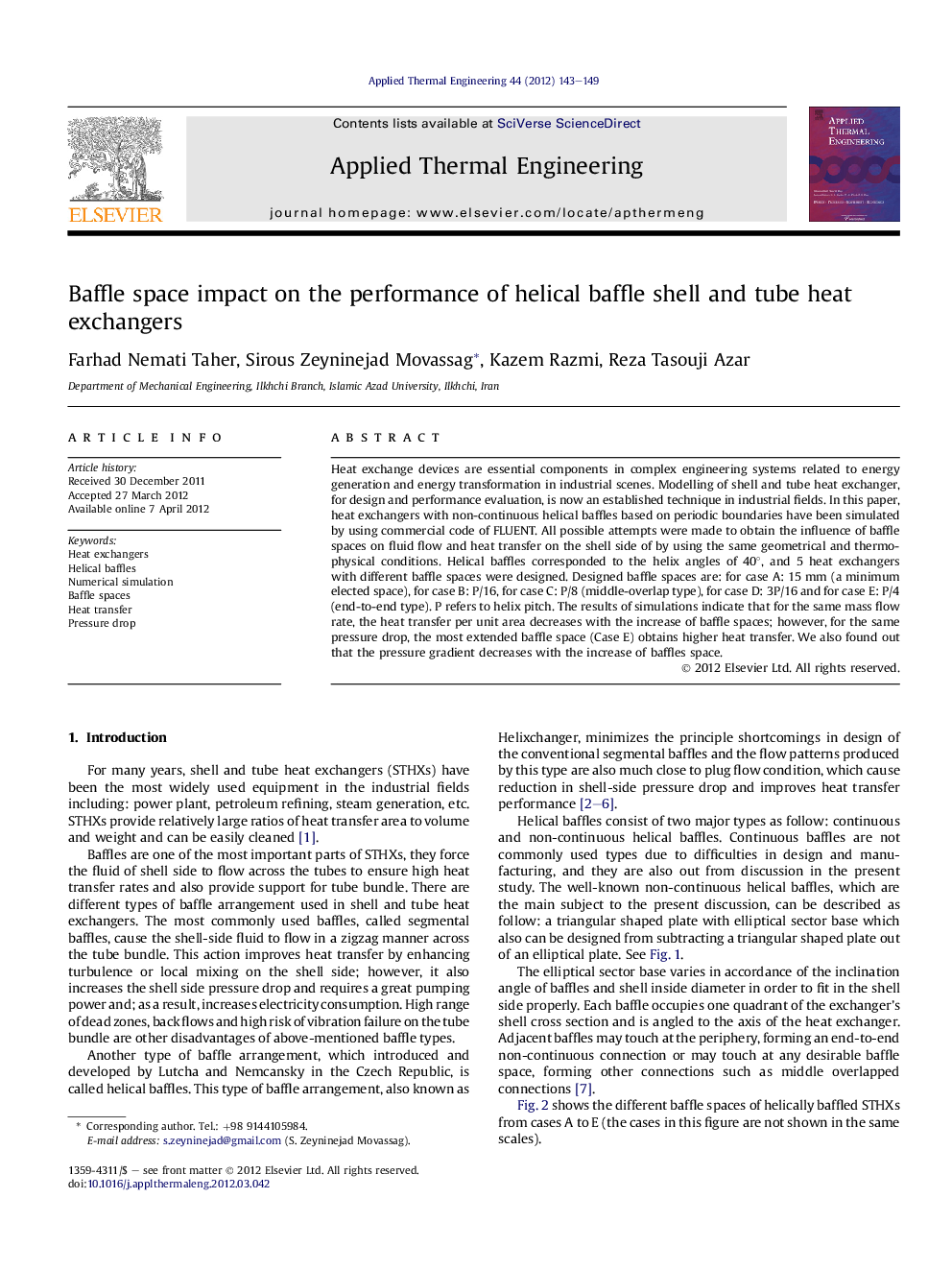| کد مقاله | کد نشریه | سال انتشار | مقاله انگلیسی | نسخه تمام متن |
|---|---|---|---|---|
| 647095 | 1457174 | 2012 | 7 صفحه PDF | دانلود رایگان |

Heat exchange devices are essential components in complex engineering systems related to energy generation and energy transformation in industrial scenes. Modelling of shell and tube heat exchanger, for design and performance evaluation, is now an established technique in industrial fields. In this paper, heat exchangers with non-continuous helical baffles based on periodic boundaries have been simulated by using commercial code of FLUENT. All possible attempts were made to obtain the influence of baffle spaces on fluid flow and heat transfer on the shell side of by using the same geometrical and thermo-physical conditions. Helical baffles corresponded to the helix angles of 40°, and 5 heat exchangers with different baffle spaces were designed. Designed baffle spaces are: for case A: 15 mm (a minimum elected space), for case B: P/16, for case C: P/8 (middle-overlap type), for case D: 3P/16 and for case E: P/4 (end-to-end type). P refers to helix pitch. The results of simulations indicate that for the same mass flow rate, the heat transfer per unit area decreases with the increase of baffle spaces; however, for the same pressure drop, the most extended baffle space (Case E) obtains higher heat transfer. We also found out that the pressure gradient decreases with the increase of baffles space.
► In this paper, heat exchangers with non-continuous helical baffles based on periodic boundaries have been simulated by using commercial code of FLUENT.
► All possible attempts were made to obtain the influence of baffle spaces on fluid flow and heat transfer on the shell side of helical baffle shell and tube heat exchangers by using the same geometrical and thermo-physical conditions.
► The major findings based on the results are: Pressure gradient increases with the decrease of baffle spaces. At the same mass flow rate and the same working condition, longer baffle spaces result in lower heat transfer coefficients. At the same pressure gradient, longer baffle spaces have higher heat transfer coefficients and among all simulated cases, case E (end-to-end type), resulted the highest heat transfer coefficient.
Journal: Applied Thermal Engineering - Volume 44, November 2012, Pages 143–149